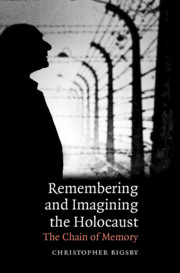Book contents
- Frontmatter
- Contents
- 1 The past remembered
- 2 W. G. Sebald: an act of restitution
- 3 Rolf Hochhuth: breaking the silence
- 4 Peter Weiss: the investigation
- 5 Arthur Miller: the rememberer
- 6 Anne Frank: everybody's heroine
- 7 Jean Améry: home and language
- 8 Primo Levi: from the darkness to the light
- 9 Elie Wiesel: to forget is to deny
- 10 Tadeusz Borowski: the world of stone
- 11 Memory theft
- Coda
- Notes
- Index
10 - Tadeusz Borowski: the world of stone
Published online by Cambridge University Press: 22 September 2009
- Frontmatter
- Contents
- 1 The past remembered
- 2 W. G. Sebald: an act of restitution
- 3 Rolf Hochhuth: breaking the silence
- 4 Peter Weiss: the investigation
- 5 Arthur Miller: the rememberer
- 6 Anne Frank: everybody's heroine
- 7 Jean Améry: home and language
- 8 Primo Levi: from the darkness to the light
- 9 Elie Wiesel: to forget is to deny
- 10 Tadeusz Borowski: the world of stone
- 11 Memory theft
- Coda
- Notes
- Index
Summary
For Elie Wiesel, the Holocaust was essentially a Jewish disaster and one not to be processed through fiction, though he himself wrote novels which circled around it. But there were other witnesses who while observing the Jewish plight were not themselves Jewish and who did choose to record what they saw through fiction, albeit fiction virtually indistinguishable from fact. One such, who, like Jean Améry and Primo Levi, Anne Frank and Elie Wiesel, spent time in Auschwitz, began to write virtually immediately after his release and, like Améry and Levi, evidently came to find life insupportable, one in a long line of those who survived only to find survival ultimately impossible to bear.
‘Tadeusz Borowski opened a gas valve on July 1, 1951. He was not yet thirty.’ Jan Kott chose to begin his account of Borowski with an implacable fact that seemed in some sense a logical extension of a scarred life. Born in Zhitomir in the Ukraine in 1922 of Polish parents, Borowski had been four when his father was sent to a labour camp inside the Arctic Circle to work on the White Sea Canal. His crime was to have involved himself in a Polish military organisation during the First World War. Borowski was eight when his mother was deported to Siberia. He himself was taken in by an aunt and was twelve before his parents returned, his father having been exchanged for Communists imprisoned in Poland. They moved to Warsaw.
- Type
- Chapter
- Information
- Remembering and Imagining the HolocaustThe Chain of Memory, pp. 341 - 356Publisher: Cambridge University PressPrint publication year: 2006



